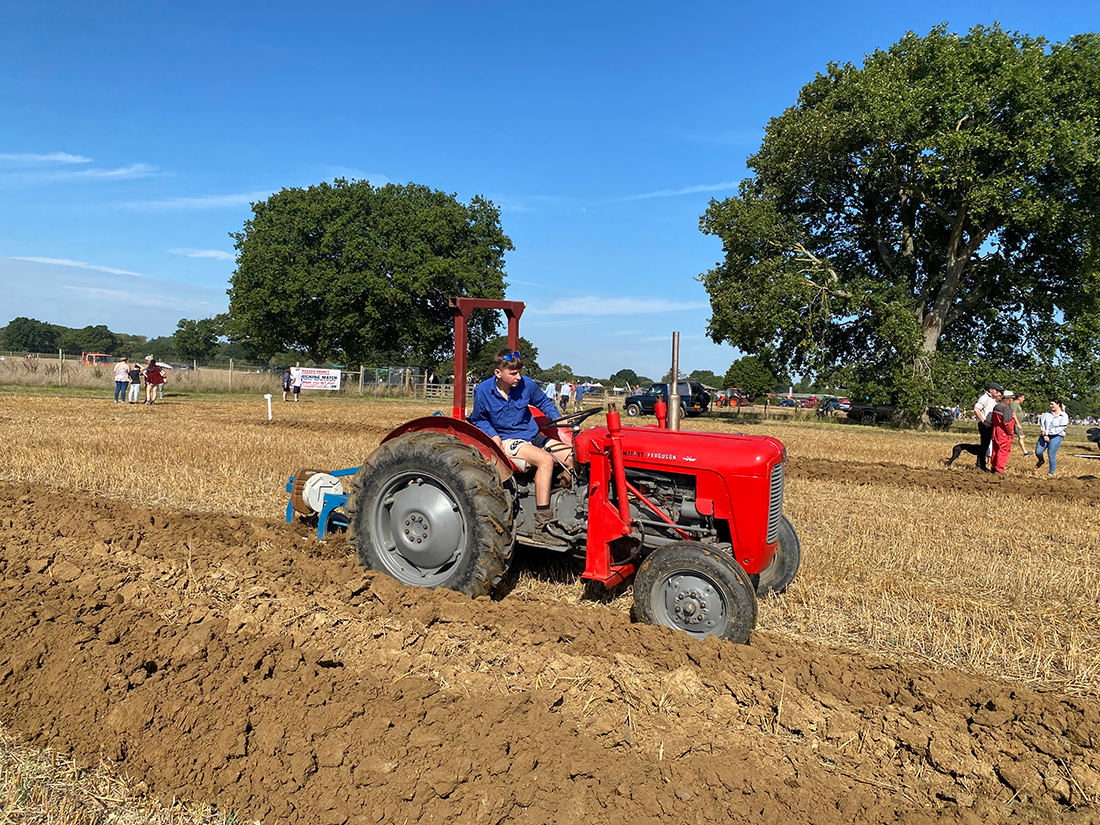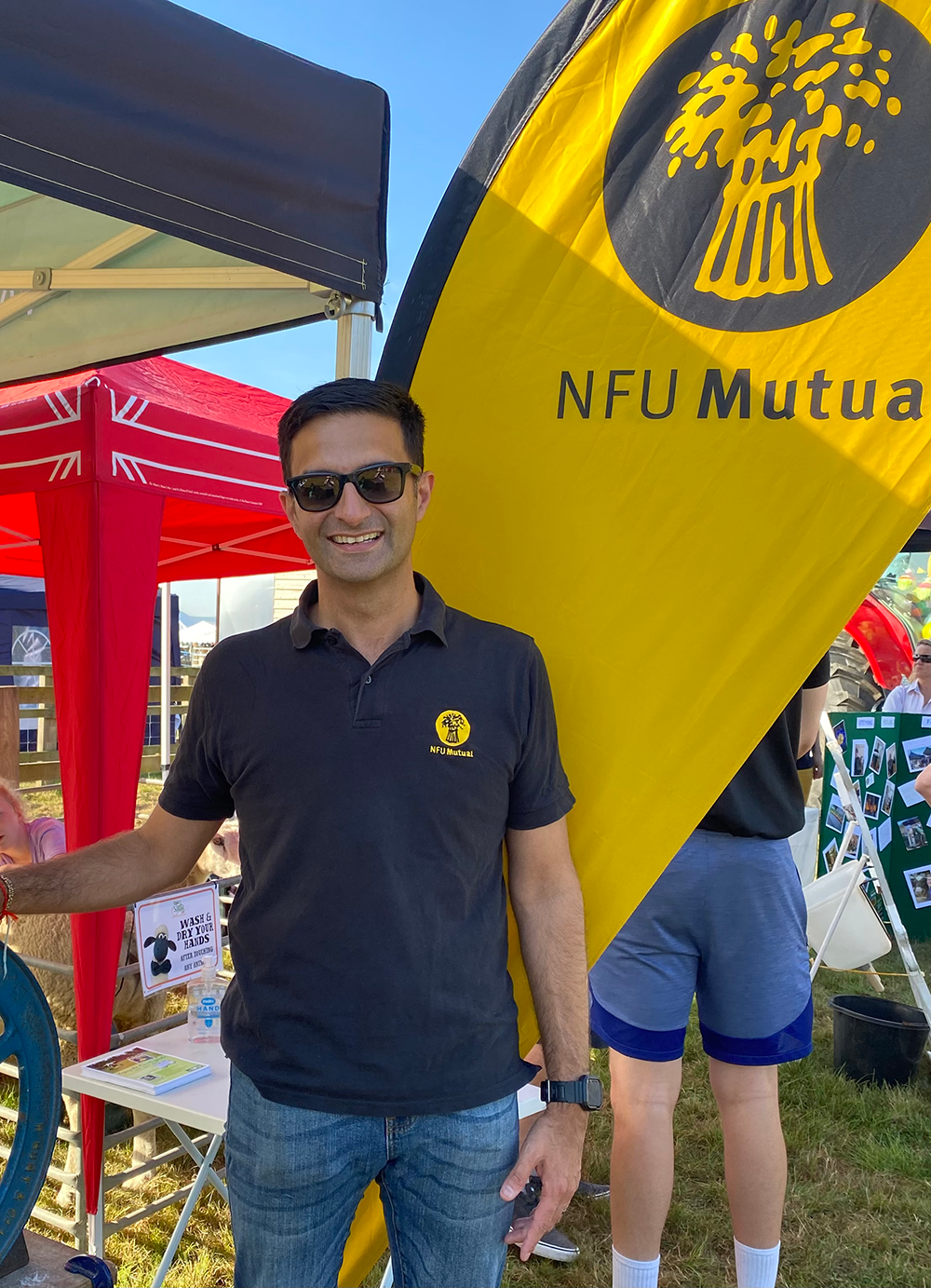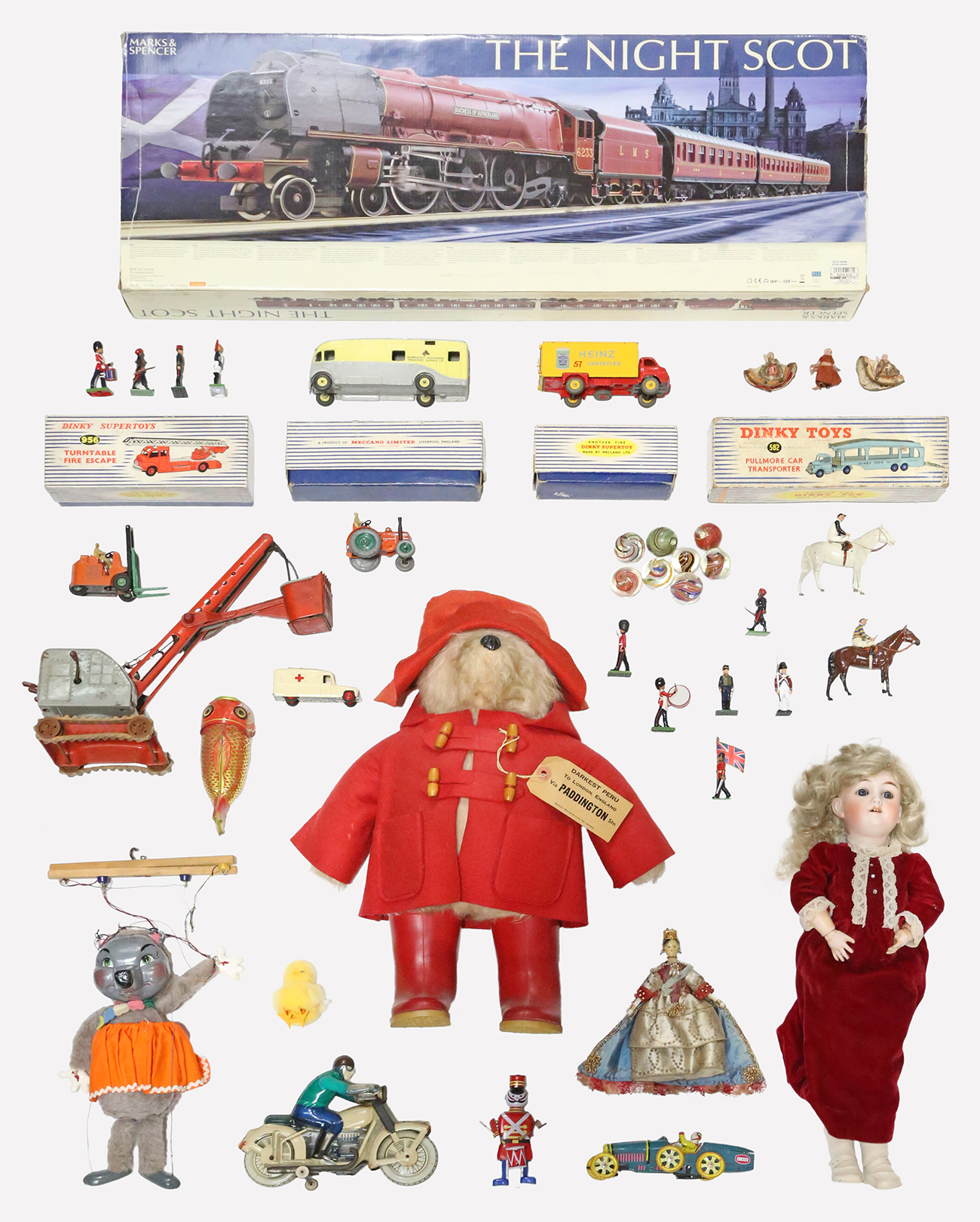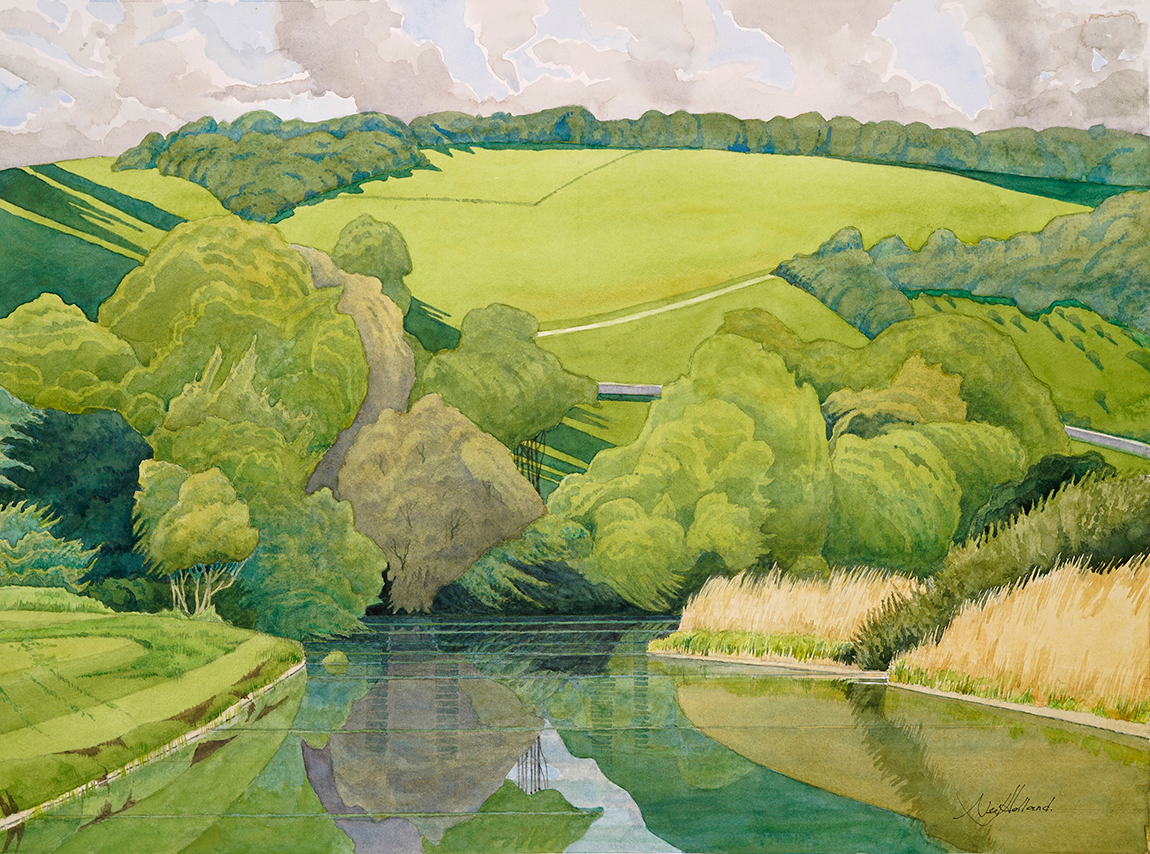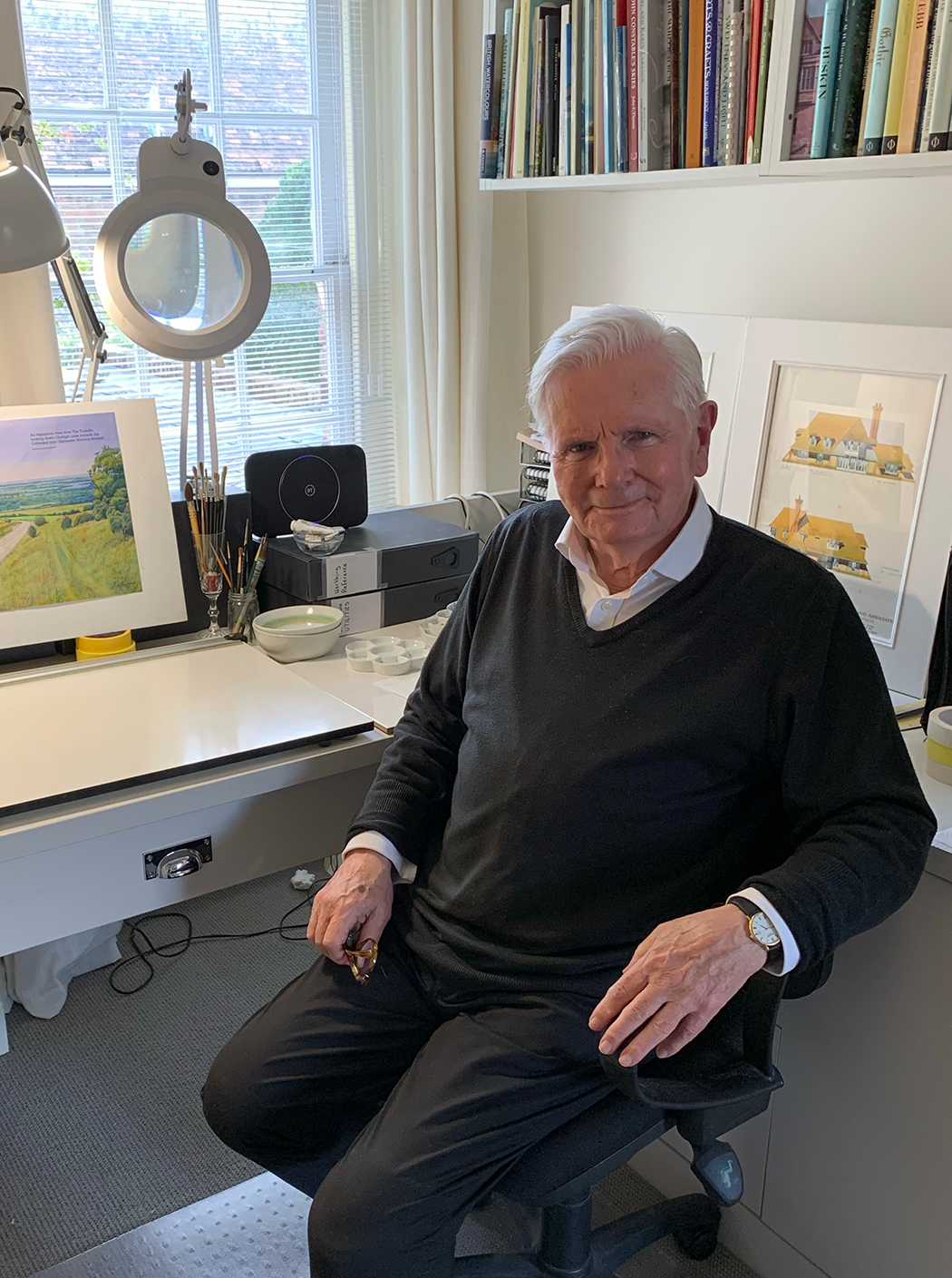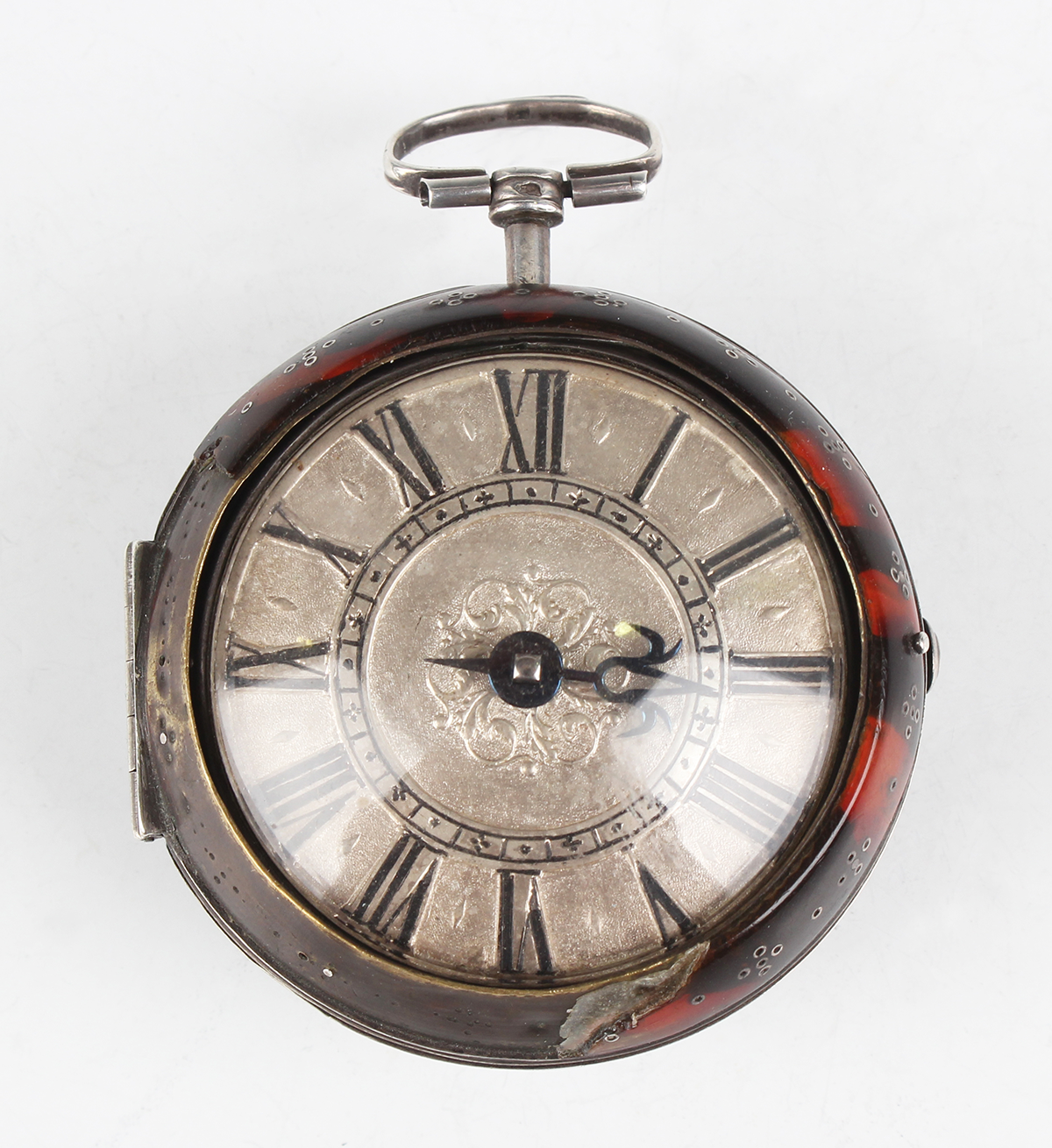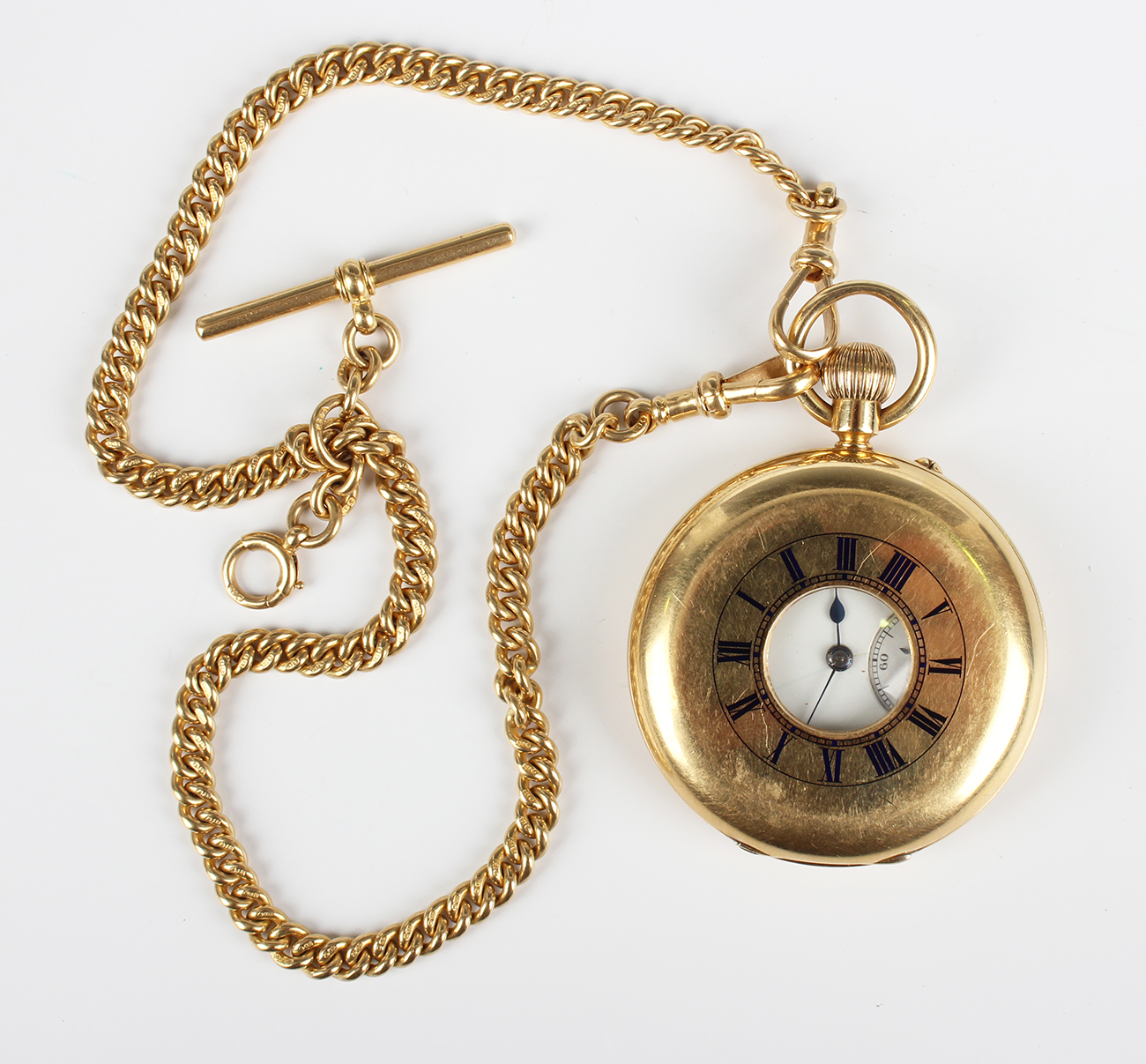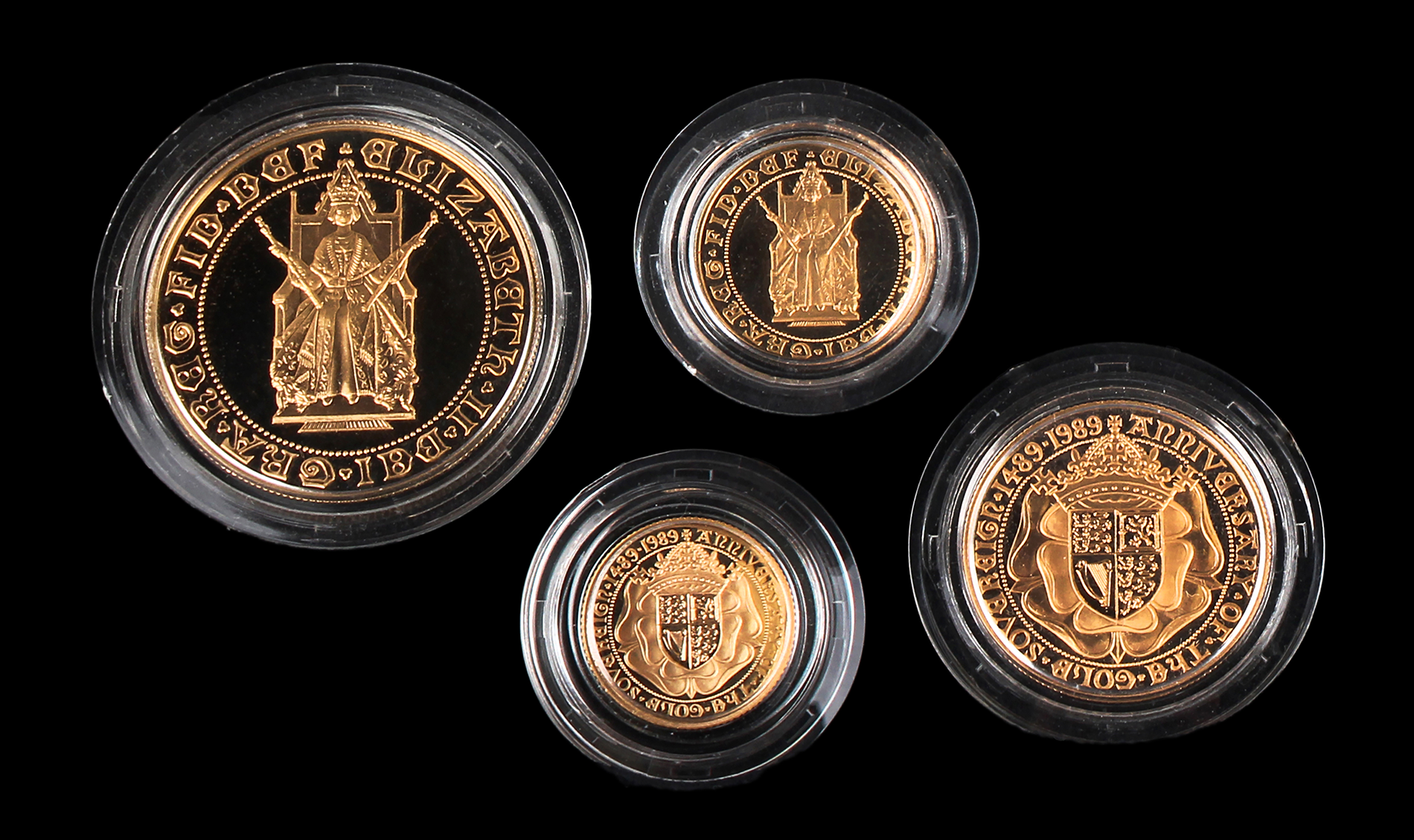
This week I am in the company of Toovey’s Coin specialist, Mark Stonard. He shows me An Elizabeth II Royal Mint proof sovereign four-coin set which commemorates the 500th Anniversary of the First Gold Sovereign in 1489 through to 1989. The set includes examples of the whole family of Sovereign coins and includes a five pounds, a double-sovereign, a sovereign and a half-sovereign. Cased and with its certificate it has just sold in his specialist coin sale for £4600.
Mark says “In 1489 Henry VII ordered the officers of the Royal Mint to produce a new money of gold. It wasn’t the first English gold coin but it was certainly the largest and most important at that date. The coin became a symbol of stability and power and every monarch had their own versions struck up until James I in 1603.
“The Sovereign was reintroduced in 1815 after the Battle of Waterloo when it was found that there was demand for a new 20 shilling gold coin. The new coin was produced in 1817. It was about half the size and weight of the first Sovereign. The reverse was decorated in relief with a depiction of St George defeating the dragon designed by Benedetto Pistrucci. He was one of the world’s most celebrated gem engravers at that time and it shows in the quality of his design. His design was used until 1825 when it was replaced by the Royal Coat of Arms. In 1871 St George appeared again but next to a shield. It wasn’t until 1887 that Pistrucci’s earlier St George design was reintroduced for Queen Victoria’s Golden Jubilee. It’s appeared on every subsequent Sovereign to the present day.”
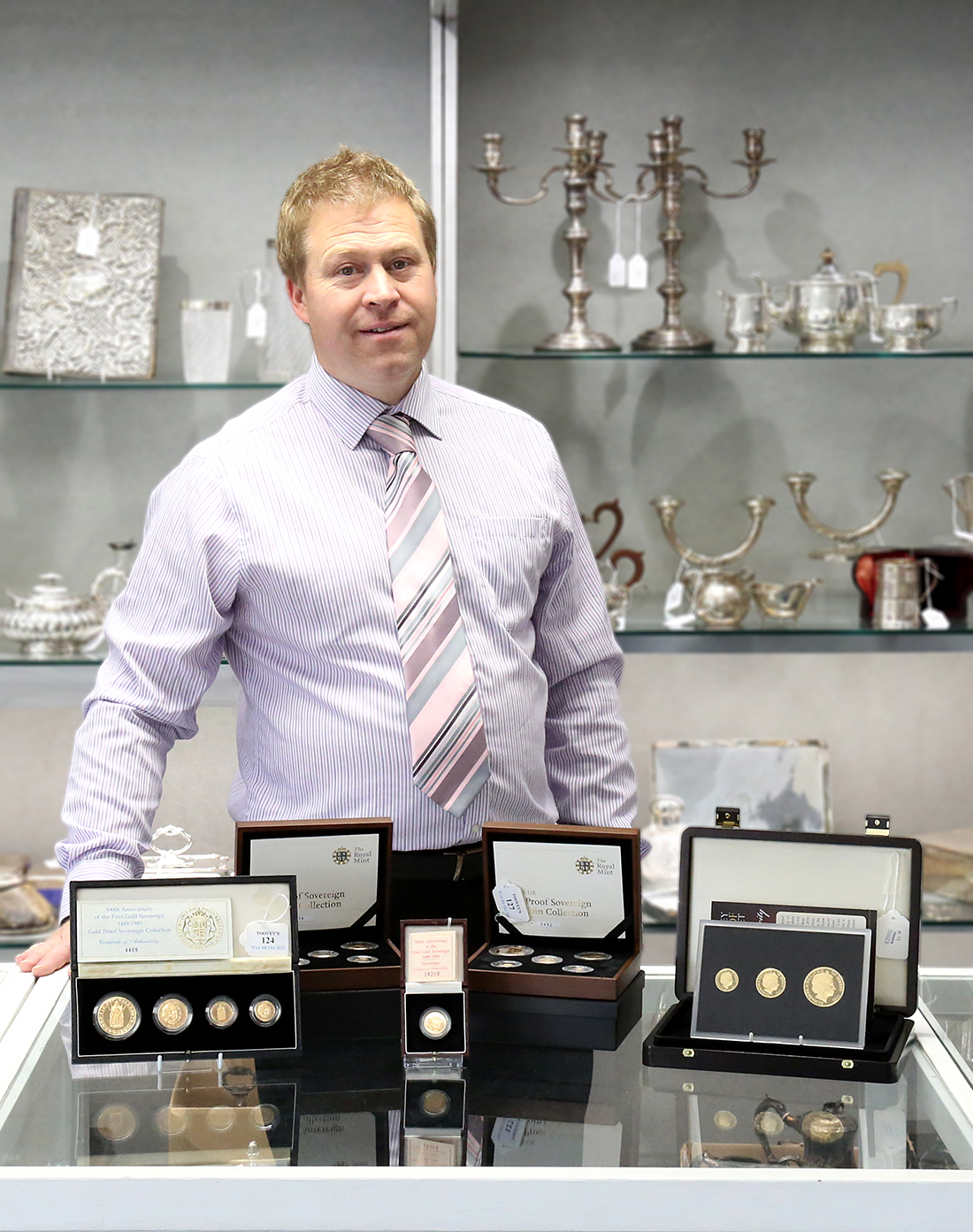
I ask Mark if it is just the value of the gold which gave this set its value. He replies “The high gold price certainly has to be taken into consideration but condition, date, the quality of design and the rarity of the coins in question also have a significant affect on values. This set sold for almost double its bullion price.” I suggest that the value reflects weight plus artistry and Mark agrees. He continues “There is an increasing appetite amongst collectors to buy and sell their gold coins in our specialist auctions as the prices are strong but realistic.”
Whether your passion is for Saxon Sceats or a gold proof Sovereign Mark’s knowledge is extraordinary.
